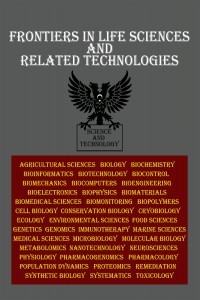Automated comet assay segmentation using combined dot enhancement filters and extended-maxima transform watershed segmentation
Automated comet assay segmentation using combined dot enhancement filters and extended-maxima transform watershed segmentation
Comet assay, dot enhancement filters, extended-maxima transform, image processing, segmentation, single cell gel watershed,
___
- Afiahayati A. E., Yanuaryska R. D., & Mulyana, S. (2022). GamaComet: A deep learning-based tool for the detection and classification of DNA damage from buccal mucosa comet assay images. Diagnostics (Basel), 12(8), 2002.
- Chan, T. F., & Vese, L. A. (2001). Active contours without edges. IEEE Transactions on Image Processing, 10, 266-277.
- Chatterjee, N., & Walker, G. C. (2017). Mechanisms of DNA damage, repair, and mutagenesis. Environmental and Molecular Mutagenesis, 58(5), 235-263.
- Dice, L. R. (1945). Measures of the amount of ecologic association between species. Ecology, 26, 297-302.
- Fairbairn, D. W., Olive, P. L., & O’Neill, K. L. (1995). The comet assay: a comprehensive review. Mutation Research/Reviews in Genetic Toxicology, 339, 37-59.
- Ganapathy, S., Muraleedharan, A., Sathidevi, P. S., Chand, P., & Rajkumar, R. P. (2016). CometQ: An automated tool for the detection and quantification of DNA damage using comet assay image analysis. Computer Methods and Programs in Biomedicine, 133, 143-154.
- Le Guyader, C., & Gout, C. (2008). Geodesic active contour under geometrical conditions: Theory and 3D applications. Numerical algorithms, 48, 105-133.
- Gyori, B. M., Venkatachalam, G., Thiagarajan, P., Hsu, D., & Clement, M. V. (2014). OpenComet: An automated tool for comet assay image analysis. Redox Biology, 2, 457-465.
- Hafiyan, Y. T., Yanuaryska, R. D., Anarossi, E., Sutanto, V. M., Triyanto, J., & Sakakibara, Y. (2021). A hybrid convolutional neural network-extreme learning machine with augmented dataset for DNA damage classification using comet assay from buccal mucosa sample. International Journal of Innovative Computing, Information and Control, 17(4), 1191-11201.
- Helmma, C., & Uhl, M. (2000). A public domain image-analysis program for the single-cell gel-electrophoresis (comet) assay. Mutagenesis, 466, 9-15.
- Lee, T., Lee, S., Sim, W. Y., Jung, Y. M., Han, S., Won, J. H., ... & Yoon, S. (2018). HiComet: a high-throughput comet analysis tool for large-scale DNA damage assessment. BioMed Central Bioinformatics, 19(1), 49-61.
- Li, Q., Sone, S., & Doi, K. (2003). Selective enhancement filters for nodules, vessels, and airway walls in two-and three-dimensional CT scans. Medical Physics, 30, 2040-2051.
- Lindeberg, T. (1998). Feature detection with automatic scale selection. International Journal of Computer Vision, 30, 77-116.
- Ostling, O., & Johanson, K. (1984). Microelectrophoretic study of radiation-induced DNA damages in individual mammalian cells. Biochemical and Biophysical Research Communications, 123, 291-298.
- Qin, Y., Wang, W., Liu, W., & Yuan, N. (2013). Extended-maxima transform watershed segmentation algorithm for touching corn kernels. Advances in Mechanical Engineering, 5, 268046.
- Rada, L., Erdil, E., Argunsah, A. O., Unay, D., & Cetin, M. (2014). Automatic dendritic spine detection using multiscale dot enhancement filters and sift features. 2014 IEEE International Conference on Image Processing (ICIP), Paris, France, 26-30.
- Ruz-Suarez, D., Martin-Gonzalez, A., Brito-Loeza, C., & Pacheco-Pantoja, E. L. (2022). Convolutional neural network for segmentation of single cell gel electrophoresis assay. In: Brito-Loeza C., Martin-Gonzalez A., Castañeda-Zeman V., Safi A. (eds) International Symposium on Intelligent Computing Systems (pp. 57-68). Cham: Springer International Publishing.
- Singh, N. P., McCoy, M. T., Tice, R. R., & Schneider, E. L. (1988). A simple technique for quantitation of low levels of DNA damage in individual cells. Experimental Cell Research, 175(1), 184-191.
- Taye, M. M. (2023). Understanding of machine learning with deep learning: architectures, workflow, applications and future directions. Computers, 12(5), 91.
- Uthirapathy, S. (2023). Cytostatic effects of avocado oil using single-cell gel electrophoresis (comet assay). Aro-The Scientific Journal of Koya University, 11(1), 16-21.
- Yayın Aralığı: Yılda 3 Sayı
- Başlangıç: 2020
- Yayıncı: İbrahim İlker ÖZYİĞİT
Ayşegül OĞLAKÇI İLHAN, Serhat SİREKBASAN, Filiz YARIMÇAN, Ayşe İSTANBULLU
Infuse herbal oils: a comparative study of wheat germ and tomato seed oils
Structural, thermoelectric, and magnetic properties of pure and Ti-doped Ca3Co4O9 ceramic compounds
Important extremophilic model microorganisms in astrobiology
